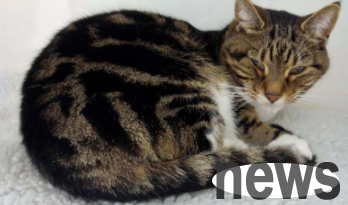Some gender-related genes control cats' main fur colors (black/orange, light/non-light, pricked/non-spiked, tabby/non-spiked and white/non-white). Tortoiseshell fur color is the characteristic of female cats with two X chromosomes. Each of the two X chromosomes has a black allele and an orange allele, so normal male cats with XY chromosomes will not have tortoiseshell fur color. The genes of the tortoise turtle turtle male cat are chimera, a rare mutant, or a condition similar to human Klinefelter syndrome (i.e., male patients with one more X chromosome).

Some veterinarians believe that tortoiseshell cats are more moody than cats of other colors, but there are few related research on cat temperament and fur color. Some surveys show that tortoiseshell cats are considered more aggressive than cats of other colors, but this evidence often depends on the owner’s description of the pet, so there may be bias. Most people prefer brightly colored pets over darker pets, which may be due to the lower feeding rate of black cats. The color of the cat's fur is associated with a variety of diseases, including FeLV infection, hyperthyroidism and hereditary deafness in white cats. There are many historical stereotypes in the relationship between cat temper and fur color (Figure 1). The reality is that most veterinarians blame the bad behavior of tortoiseshell cats on their hair color.
Although "naughty tortoiseshell" and "laid-back black cat" do exist in general, is there really a relationship between cat's color and temper? What is the connection between cat's fur color and other diseases? What is the relationship between cat's fur color and gender? What is the relationship between

coat color and gender?
The genes that control cats' fur color are located on the X chromosome. These genes have two mutually exclusive alleles: black and orange. A female cat with two X chromosomes, carrying an orange allele and a black allele will be tortoiseshell. Only when both X chromosomes of a female cat carry orange genes on it will it show orange hair. Since black genes are more common in felines, orange cats are usually male.
Male cats with an X and Y chromosome are either black or orange depending on the alleles carried on the X chromosome. Male cats can never have tortoiseshell fur color, because this color requires both black and orange alleles to exist.
Therefore, male tortoiseshell cats are either males with Cranfelt syndrome (XXY) or rare genetic chimera from different fertilized eggs (XX-XY or XY-XY).
Because the orange gene in the cell becomes a black gene during fetal development, male tortoise turtle turtle cats can also reproduce offspring, which is extremely rare.